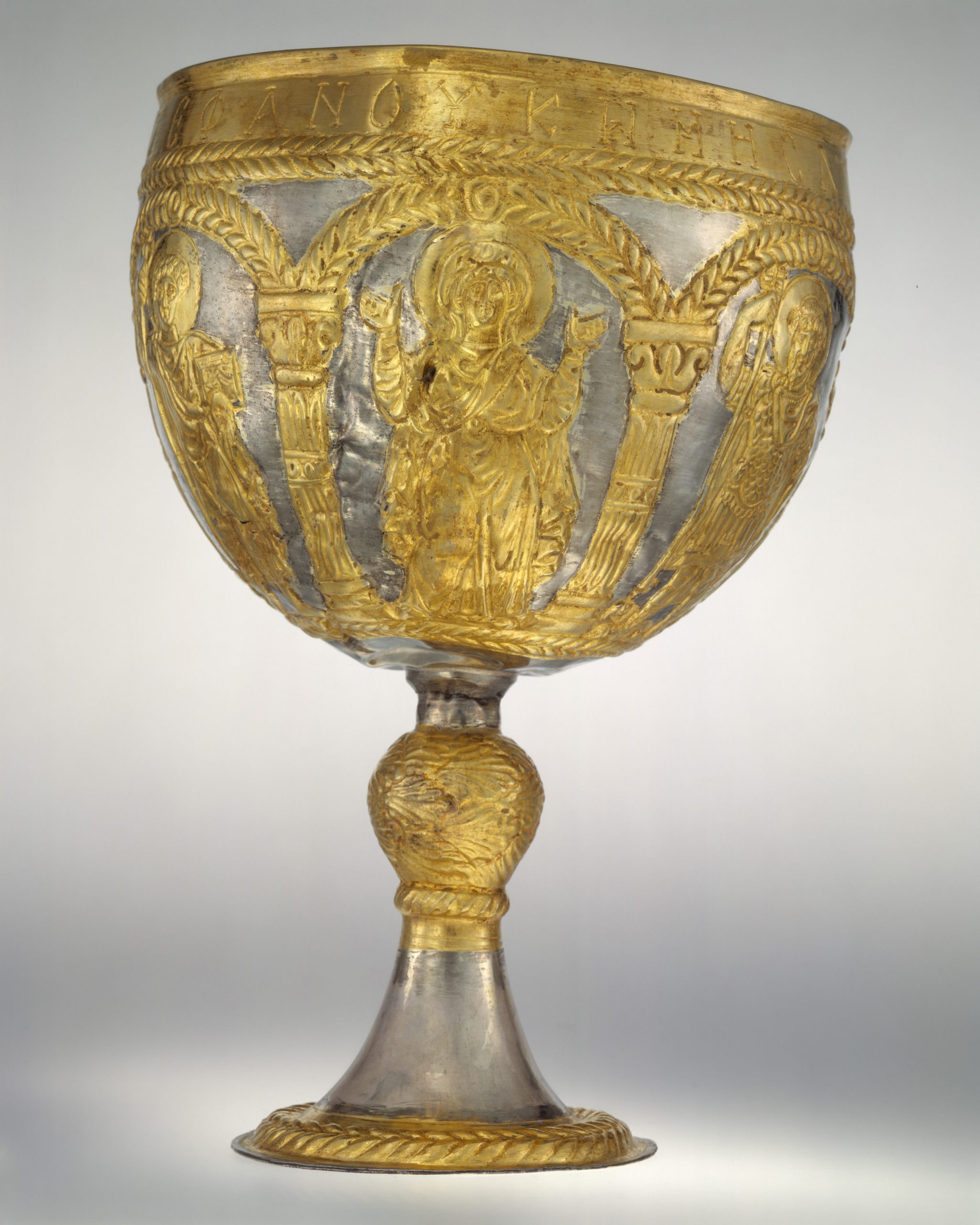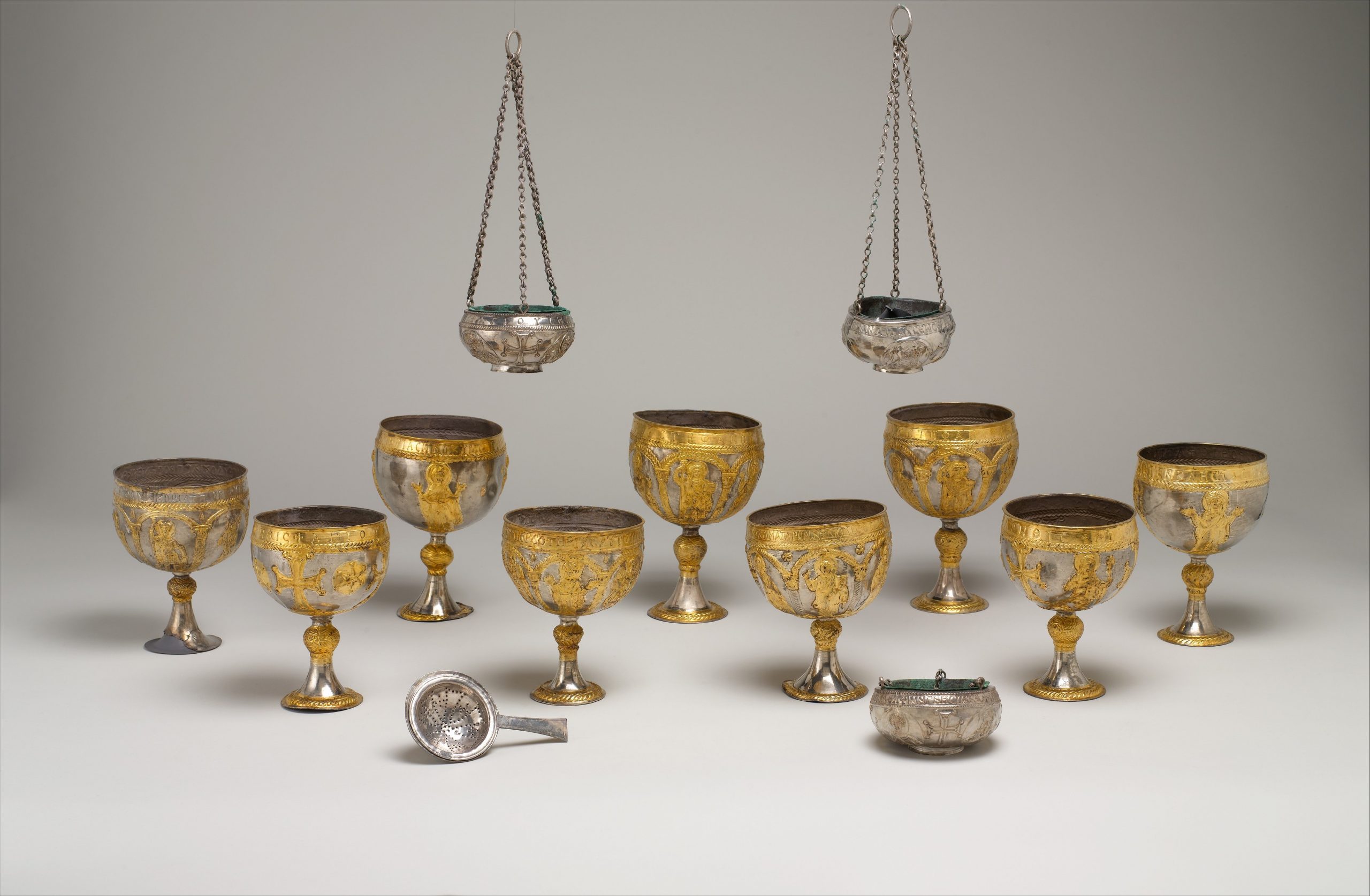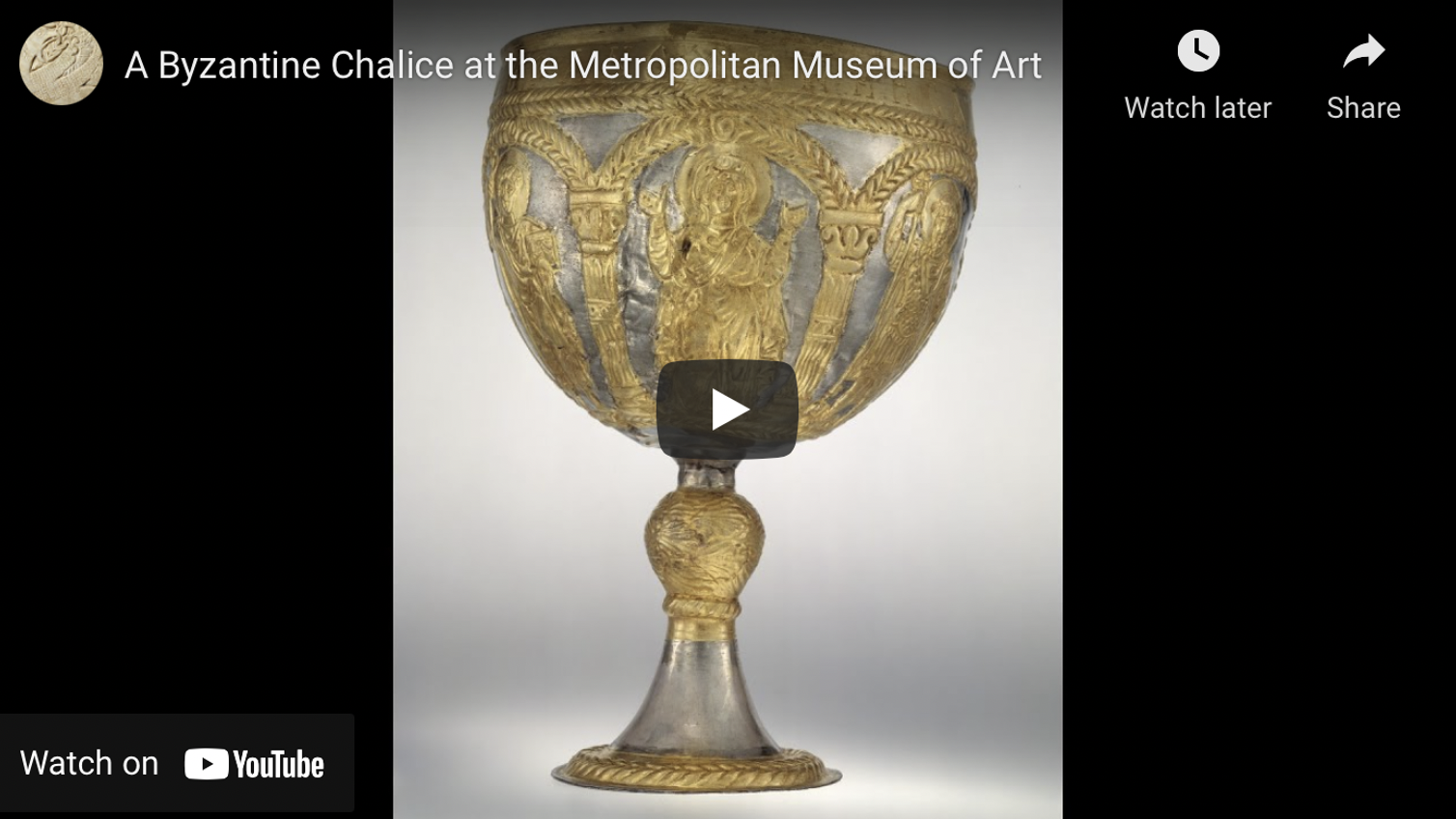18
Questions for study or discussion
Dr. Anne McClanan and Dr. Evan Freeman
https://smarthistory.org/a-chalice-from-the-attarouthi-treasure/
Thinking about context
- When and where was this chalice made?
- How was this chalice used?
- How did the survival of this chalice relate to the shifting borders of the Byzantine Empire in the seventh century?
Thinking about this object
- What materials and techniques were used to create this chalice?
- What role do materials and techniques play in the chalice’s appearance and the viewer’s experience of it?
- How does this chalice’s materials and form reflect its ritual function?

Thinking about iconography
- What is depicted on this chalice?
- Why do you think this chalice was decorated with these images?
- How might this imagery have resonated with the chalice’s ritual functions?
Thinking about art history
- How does this chalice and its imagery fit within the broader history of art?
Watch the video.
<https://youtu.be/2AVRI5MTyVo>


